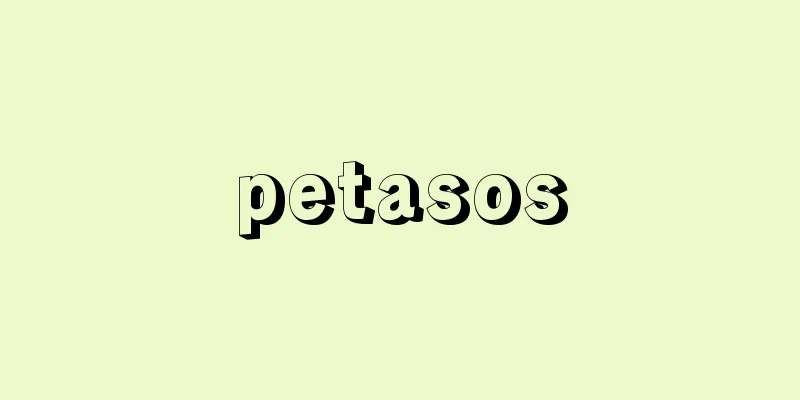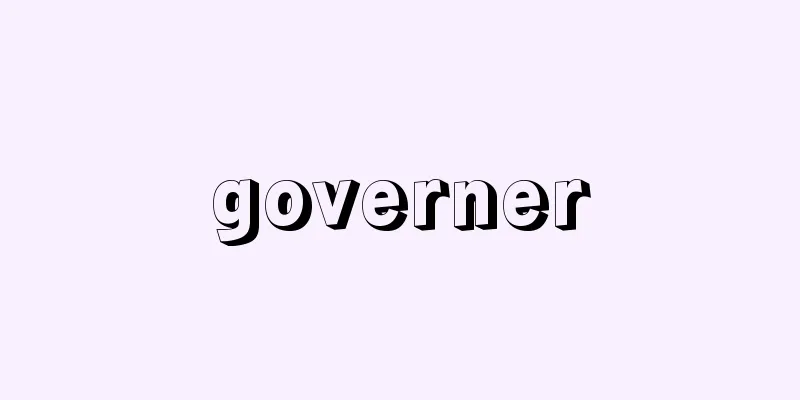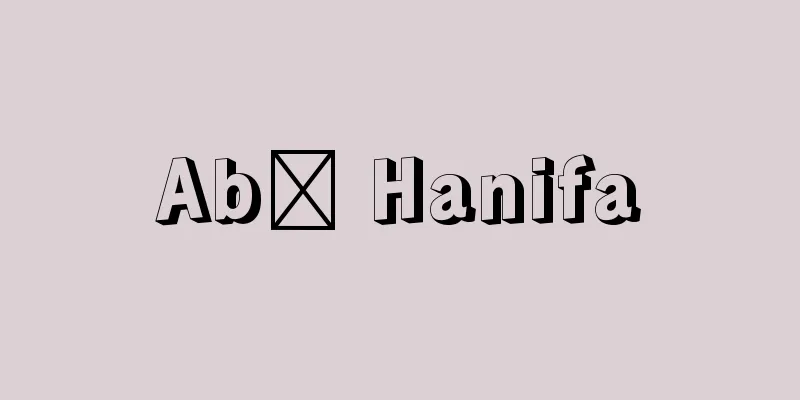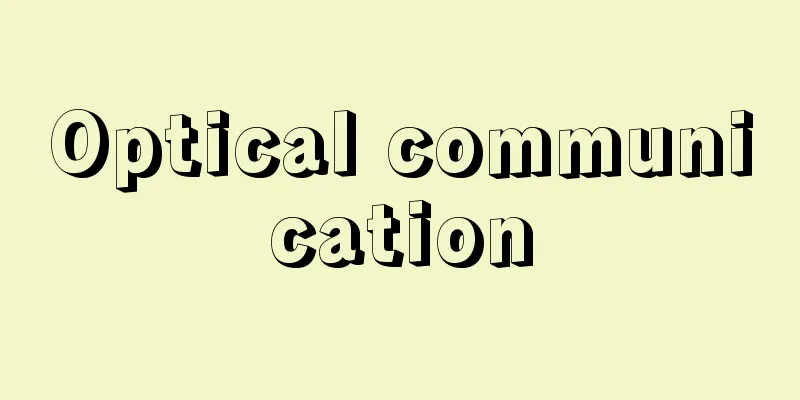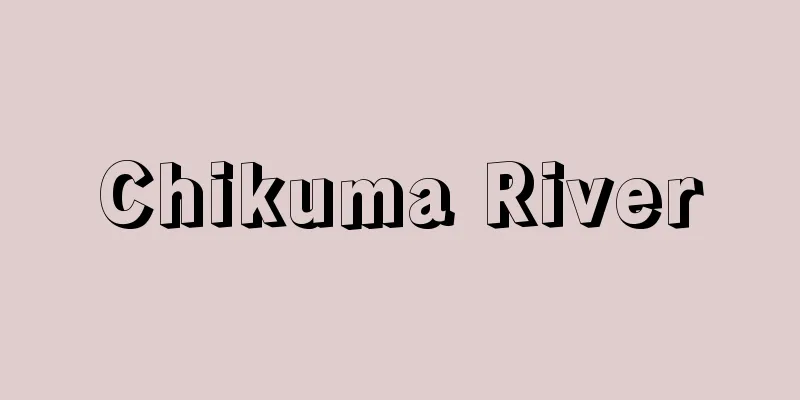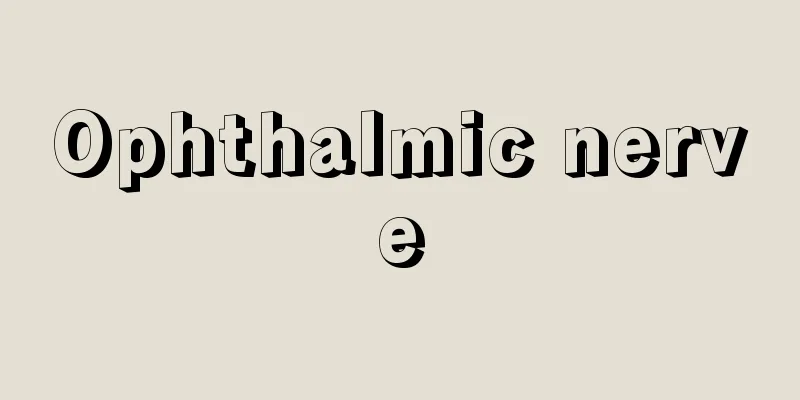Food Control System

|
The Food Control Law was enacted in 1942 (Showa 17) following the start of the Pacific War, and continued until 1994 (Heisei 6). It was a system of national control and regulation of staple foods based on the Food Control Law. It is abbreviated as the Food Control System. [Keizo Mochida] Revised Food Control LawThe Food Control Law was substantially revised in 1981 and came into force in 1982. This revision eliminated the old law's character as a wartime rationing control law, and aimed to create a distribution regulation system that was in line with reality, but partial revisions were not enough, so the Food Control Law was abolished in 1994, and the system was significantly changed with the enactment of the Food Law. The Food Control System under the Food Control Law covers rice and wheat, and the outline of the system from 1982 to 1994 was as follows: [Keizo Mochida] RiceEvery year, the Minister of Agriculture, Forestry and Fisheries draws up a basic plan for rice management. According to this plan, the government purchases rice that it has decided to manage through collection agents designated by the government; this is what is known as government rice. The amount is determined by the supply and demand plan for that year. In addition, independently distributed rice is officially recognized. Although this is within the framework of the basic plan, it does not have to be sold directly to the government, and designated collection agents can sell it to wholesalers in the consuming area. In addition, the transfer (donation) of rice by farmers for non-profit purposes is also permitted. With the exception of this transfer by farmers, the distribution of rice, including independently distributed rice, was entirely under state control. Rice sellers (wholesale and retail) must receive permission from the prefectural governor and cannot operate freely. However, consumers are free to purchase rice. However, in the event of an emergency in which the supply and demand of rice becomes extremely tight, the rationing system for consumers can be reinstated. The price at which the government purchases rice from producers (producer's rice price) is supposed to be set with the aim of ensuring reproduction, but due to a rice surplus and a worsening financial situation, it has remained almost unchanged since 1977. Since 1990, the price of independently distributed rice has been determined for each brand through bidding held about five times a year by the Independently Distributed Rice Price Formation Organization, and trading has been based on this price. Farmers' take-home pay is the selling price minus expenses. The selling price of government rice is supposed to be set with the aim of stabilizing consumer household finances, but in reality it is set taking into account the financial situation and the Food Agency's deficit, and has been gradually rising since 1977. The price of independently distributed rice has also risen in line with the selling price of government rice. The consumer price of rice was not regulated, but was left to the discretion of retailers. However, the prices of standard price rice and high-grade tokuyou rice were determined by administrative guidance, and while retailers were instructed to keep standard price rice in stock at all times, sales of high-grade tokuyou rice were extremely low. In addition to this, retailers sold several types of higher quality rice made from independently distributed rice and other ingredients, and their prices were free to set, but prefectures instructed them not to vary much. The problem with the rice price system was the gap between the government purchase price and the selling price (or cost price), which resulted in a deficit in the Food Agency's accounts and required transfers from the general account. Due to the gap between government rice and government rice, the distribution of independently distributed rice was also maintained through various subsidies, and the financial burden per unit reached 73% of that of government rice (1984). Under the Food Control System, 95% of rice collected (1984 harvest volume) was by agricultural cooperatives, and 5% by merchants. By monopolizing rice collection, agricultural cooperatives have earned large profits under the Food Control System in the form of commission, warehouse fees, and the conversion of rice payments into agricultural cooperative deposits. In 1994 there were 277 rice wholesalers, the majority of which were retailer cooperatives. There were 71,891 retailers (sales offices), and the number was on a slight upward trend. [Keizo Mochida] wheatThe distribution of wheat is not controlled; the government simply purchases it from producers at a fixed price and sells it to traders at a fixed price. However, due to a large margin, producers sell almost the entire amount (food wheat) to the government, and the Food Agency's accounts for domestic wheat have been in the red. Under the Food Agency system, trade of both rice and wheat is under state control, and the government relies on imports for the majority of its wheat, but imported wheat has been in the black in most years. [Keizo Mochida] historyThe food control system began with the Food Control Law of 1942 (Showa 17), but even before that, there was a long history of rice control, beginning with the Rice Law of 1921 (Taisho 10). Most of this history was a price support policy in response to the fall in rice prices during the depression, but rice shortages intensified from around 1939, and finally the Food Control Law was enacted as wartime control legislation. The main purpose of the food control system during the wartime and postwar food shortages was to fairly distribute staple foods (initially rice, wheat, potatoes, and miscellaneous grains) to the public, and in order to ensure the amount of distribution, all staple foods were compulsorily purchased (contributed) from producers, except for those that were not owned by the government. At the same time, the purchase price from producers, the selling price to government distributors, and the selling price to consumers were all officially set, and any violation of this control was subject to criminal punishment, from producers to consumers. Consumers were unable to purchase staple foods without a ration passbook, and producers were prohibited from transferring any of their food to anyone other than the government, including as gifts. After World War II, food shortages became more serious and the role of the Food Control System grew, but at the same time, the authoritarian supply system gradually weakened and the focus shifted to securing food from producers through economic means. As food shortages eased, potatoes and other crops were removed from the Food Control System in 1950 and in 1951, respectively, and wheat came under indirect control in 1952, leaving only rice under direct control, but the rice supply system ended in 1954, after which it was replaced by a system of advance sale. The bumper rice harvest of 1955 marked a gradual change in the function of rice management, with the focus shifting from promoting rice supply to compensating rice farmers' incomes through producer rice prices, but with the introduction of the production cost/income compensation method to the producer rice price determination method in 1960, the Food Control System decisively became a system for protecting rice farmers. The era of rice surplus that began in 1967 marked another turning point. Excess rice and the financial burden became the biggest problem for the Food Control System, and production adjustments began in 1970. From then on, measures to deal with surplus rice became the biggest issue for the Food Control System, and producer rice prices began to be determined in a restrictive manner. The rice surplus was a contradiction between increasing production and decreasing consumption, but the Food Control System was also unable to meet consumer needs in terms of quality. Therefore, in order to meet the demand for high-quality rice and reduce the financial burden, market mechanisms were introduced, centering on the introduction of voluntary rice distribution (1969) and the liberalization of rice prices for consumers (1972). Since the 1960s, the Food Control System has completely strayed from its original role as a distribution control system, and the gap between law and reality has become significant, until in 1981 the Food Control Law was amended to acknowledge reality, and in 1994 the Food Control Law was abolished and replaced by the "Food Law." [Keizo Mochida] "History of Food Control, 10 volumes (1969-1972, Food Agency)" ▽ "Japanese Agriculture Annual Report, Vol. 17, Food Control System -- Structure and Function, edited by Kondo Yasuo (1968, Ochanomizu Shobo)" ▽ "Japanese Agriculture Annual Report, Vol. 28, Food Control System -- Significance of its Existence in the 1980s, edited by Kondo Yasuo (1980, Ochanomizu Shobo)" ▽ "Japanese Rice -- Climate, History and Lifestyle, written by Mochida Keizo (1990, Chikuma Shobo)" ▽ "Japanese Agriculture Annual Report, Vol. 42, From Government Food Control to Agricultural Cooperative Food Control, edited by Ouchi Chikara (1995, Rural Statistics Association)" ▽ "Food System Study Group, Planning Division, General Affairs Department, Food Agency, eds., Food Law You Should Know (1996, Printing Bureau, Ministry of Finance)" [Reference items] | | | | | | |Source: Shogakukan Encyclopedia Nipponica About Encyclopedia Nipponica Information | Legend |
|
太平洋戦争の開始に伴って1942年(昭和17)に制定され、1994年(平成6)まで続いた食糧管理法(食管法)に基づく、主要食糧の国による管理・統制の制度。食管制度と略称される。 [持田恵三] 改正食管法食管法は1981年(昭和56)に大幅に改正され、1982年から施行された。この改正によって、戦時の配給統制立法としての旧食管法の性格はなくなり、現実に即した流通規制の制度を目ざしたが、部分的改正では追い付かないようになり、1994年に食糧管理法は廃止され、「食糧法」の制定により制度は大幅に変更された。 食管法の下での食管制度は米と麦を対象としており、1982~1994年当時の大要は次のとおりであった。 [持田恵三] 米農林水産大臣は毎年米穀の管理に関する基本計画をたてる。この計画によって、政府が管理するとした米を、政府が指定した集荷業者を通じて買い入れるが、これがいわゆる政府米である。この量はその年の需給計画によって決まる。このほかに、自主流通米が公認されている。これは基本計画の枠内ではあるが、直接政府に売り渡す必要はなく、指定集荷業者から消費地の卸商人に売ることができる。また、農家が非営利的な目的で行う米の譲渡(贈与)も認められる。この農家による譲渡を除けば、自主流通米を含めて、米の流通は全量国家管理の下に置かれていた。米の販売業者(卸、小売り)は都道府県知事の許可を受けねばならず、自由に営業できない。しかし、消費者が米を購入するのは自由である。ただ米の需給が著しく逼迫(ひっぱく)するような非常事態に際しては、消費者に対し配給制度を復活できる。 生産者から政府が買い入れる米価(生産者米価)は、再生産の確保を旨として決めることになっているが、米過剰と財政状態の悪化のため、1977年以来ほとんど据え置かれてきた。自主流通米の価格は、1990年からは自主流通米価格形成機構での年5回ぐらいの入札によって各銘柄ごとに価格が決まり、それに基づいて取引された。その売渡価格から経費を引いたものが農家の手取りとなる。政府米の売渡価格は、消費者家計の安定を旨として決めることになっているが、事実上、財政事情、食管赤字を考慮して決められており、1977年以降も徐々に引き上げられてきた。なお、自主流通米の価格も政府米売渡価格に応じて値上りしてきた。 米の消費者価格は統制されておらず、小売業者の自由に任されていた。しかし標準価格米、徳用上米については、行政指導によって価格が決められており、また標準価格米は小売商が常置するよう指導されているが、徳用上米は販売量がきわめて少ない。小売店ではこのほか、自主流通米などを原料とした数種類のより良質な米が販売されており、その価格は自由であるが、都道府県の指導でそう大差はなかった。米価体系の問題点は、政府買入価格と売渡価格(ないしコスト価格)の逆ざやであり、これが食管会計の赤字をもたらし、一般会計からの繰り入れを必要としていた。自主流通米についても、政府米の逆ざやの影響で、さまざまな奨励金によってその流通が維持されており、その単位当りの財政負担は、政府米の73%(1984年)に達した。 食管制度下の米集荷の95%(1984年産集荷量)は農業協同組合であり、5%が商人であった。農協は米集荷の独占によって、手数料、倉庫料、米代金の農協預金化などの大きな利益を食管制度の下で得てきた。1994年における米卸売業者数は277で、うち過半が小売商の協同組合である。小売商は7万1891で(営業所)、若干増加傾向にあった。 [持田恵三] 麦麦の流通は統制されてはおらず、ただ生産者から一定の価格で政府が買い入れ、一定の価格で業者に売り渡す。しかし大幅な逆ざやのため、ほとんど全量(食用麦)を生産者は政府に売っており、国内産の麦についても食管会計は大きな赤字となってきた。なお、食管制度では米麦ともに貿易は国家管理の下に置かれており、麦はその大部分を輸入に依存しているが、輸入麦については大部分の年度は黒字を出していた。 [持田恵三] 歴史食糧管理制度は1942年(昭和17)の食糧管理法に始まるが、その前にも、1921年(大正10)の米穀法以来の長い米穀統制の歴史があった。この前史の大部分は、恐慌下の米価低落に対応する価格支持政策であったが、1939年ごろから米不足が激化し、ついに戦時統制立法としての食管法の成立をみたのである。戦時・戦後の食糧不足時代の食管制度は、不足する主要食糧(当初は米麦、いも類、雑穀)を、国民に公平に配給することを主要目的とし、その配給量を確保するために、生産者から自家保有分を除いたいっさいの主要食糧を強制的に買い上げる(供出)ものであった。同時に生産者からの買入価格、政府の配給業者への売渡価格、消費者への販売価格はすべて公定され、この統制に対するいっさいの違反は、生産者から消費者に至るまで刑事罰の対象とされた。消費者は配給通帳なしには主要食糧は購入できず、生産者は贈与を含めて政府以外への譲渡はまったく禁止された。 第二次世界大戦後、食糧不足は深刻化し、食管制度の役割は大きくなったが、一方、強権的な供出制度はしだいに弱まり、経済的手段による生産者からの食糧の確保が中心になっていった。食糧不足の緩和とともに、1950年いも類、1951年雑穀が食管制度の対象から外され、麦も1952年から間接統制になり、米だけが直接統制に残されたが、米の供出制も1954年までで終わり、以後、予約売渡制になった。 1955年の米の豊作を契機として米管理の機能もしだいに変化し、供出促進より、生産者米価による米作農民の所得補償に中心が移ったが、1960年の生産者米価決定方式に、生産費・所得補償方式が導入されるに至って、食管制度は決定的に米作農民の保護の体制となった。さらに1967年から始まる米過剰時代がもう一つの転機となった。過剰米と財政負担が食管制度の最大の問題となり、1970年から生産調整が行われるようになったのである。以後、過剰米対策が食管制度の最大の問題となり、生産者米価は抑制的に決められるようになった。 米過剰は、増加する生産と減少する消費との矛盾であったが、食管制度は品質の面でも消費者のニーズにこたえることができなかった。そのため良質米需要への対応と財政負担軽減のために、自主流通米(1969年)、消費者米価自由化(1972年)などを中心として、市場メカニズムの導入が行われたのである。1960年代以降食管制度は、その本来の配給統制的性格からまったく離れ、法律と実態との乖離(かいり)は著しくなり、ついに1981年に実態追認的な食管法改正が行われ、さらに1994年食管法は廃止され「食糧法」にかわったのである。 [持田恵三] 『『食糧管理史』全10冊(1969~72・食糧庁)』▽『近藤康男編『日本農業年報第17集 食管制度――構造と機能』(1968・御茶の水書房)』▽『近藤康男編『日本農業年報第28集 食管――80年代における存在意義』(1980・御茶の水書房)』▽『持田恵三著『日本の米――風土・歴史・生活』(1990・筑摩書房)』▽『大内力編『日本農業年報第42集 政府食管から農協食管へ』(1995・農村統計協会)』▽『食糧庁総務部企画課内食糧制度研究会編著『知っておきたい食糧法』(1996・大蔵省印刷局)』 [参照項目] | | | | | | |出典 小学館 日本大百科全書(ニッポニカ)日本大百科全書(ニッポニカ)について 情報 | 凡例 |
<<: Food Control Special Account
>>: Shokurizuka (English: Sikri-ch'ong)
Recommend
Unterwalden (state)
The sixth canton in the Swiss Confederation. Howev...
Tomb of Sima Jinlong - Shibakinryubo (English: Tomb of Sima Jinlong)
The joint tomb of Sima Jinlong (?-484), a senior o...
Dahlmann, Friedrich Christoph
Born: May 13, 1785, Wismar Died December 5, 1860. ...
《Letter to the Academy》 - A letter to the Academy
…While preaching in his province, he wrote severa...
Writer's Diary - Dnevnik pisatelya
This is a work by the Russian author F. Dostoevsky...
Calling a crow - Karasuyobi
...Based on the idea that the first work of the y...
Oshizu no Kata - Oshizu no Kata
⇒ Jokoin Temple (1) Source: Kodansha Digital Japan...
Intermediate Value Theorem
This is a theorem that for a continuous function f...
Salted Surimi - Kaen Surimi
...This frozen surimi technology was developed in...
Ichikawa Somegoro (first generation)
…(4) 4th generation (1737-1802 | Genbun 2-Kyowa 2...
Crown Island
An island located about 10 km north-northwest of ...
Seasonal Nursery - Kisetsu Takujisho
...This project was incorporated into the charita...
vat leaching
Leaching is not only used as a smelting technique...
treaty cruiser
… The Washington Treaty (1922) limited the number...
Anamorphic Lens
A cylindrical auxiliary lens used in Cinemascope, ...


